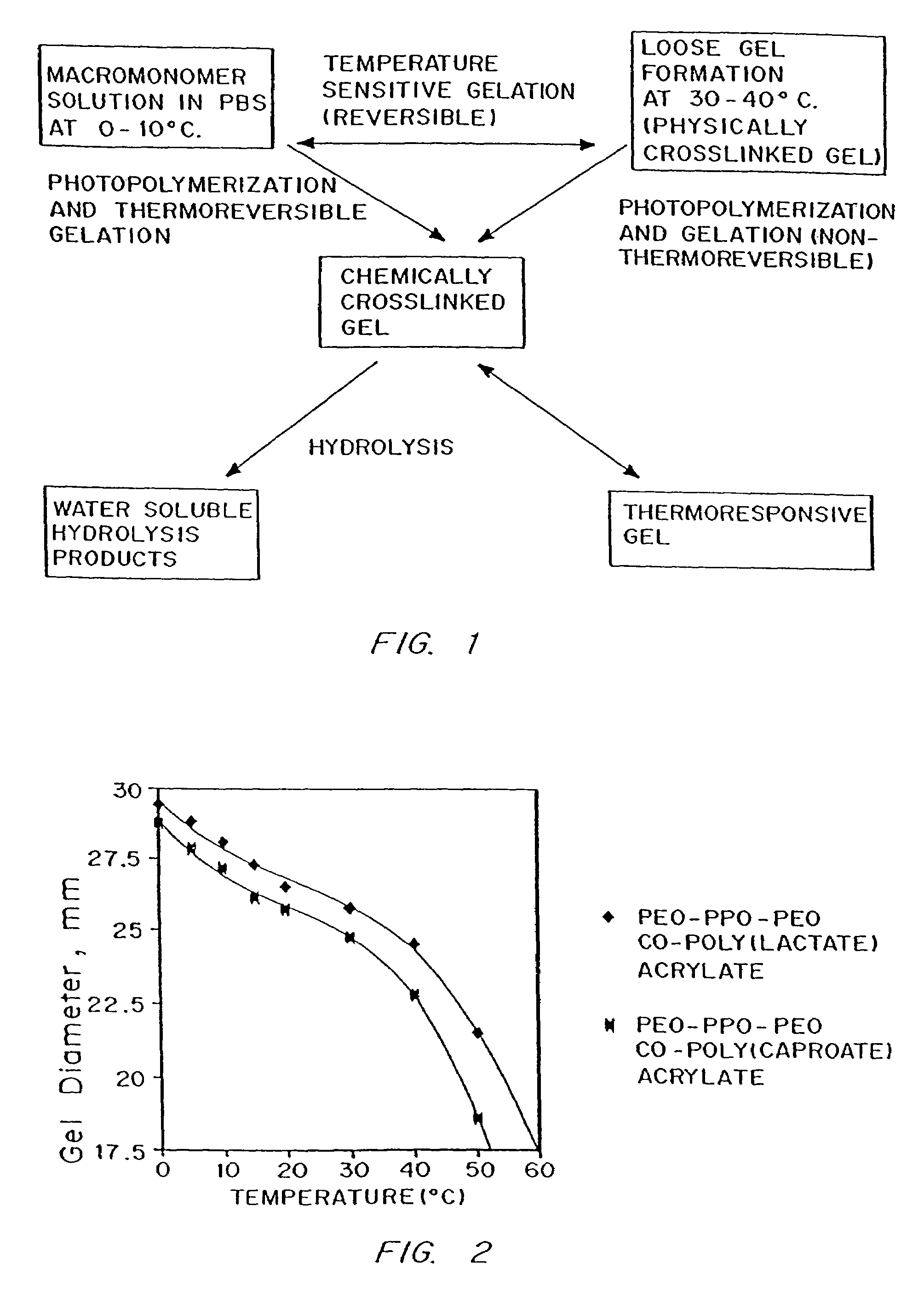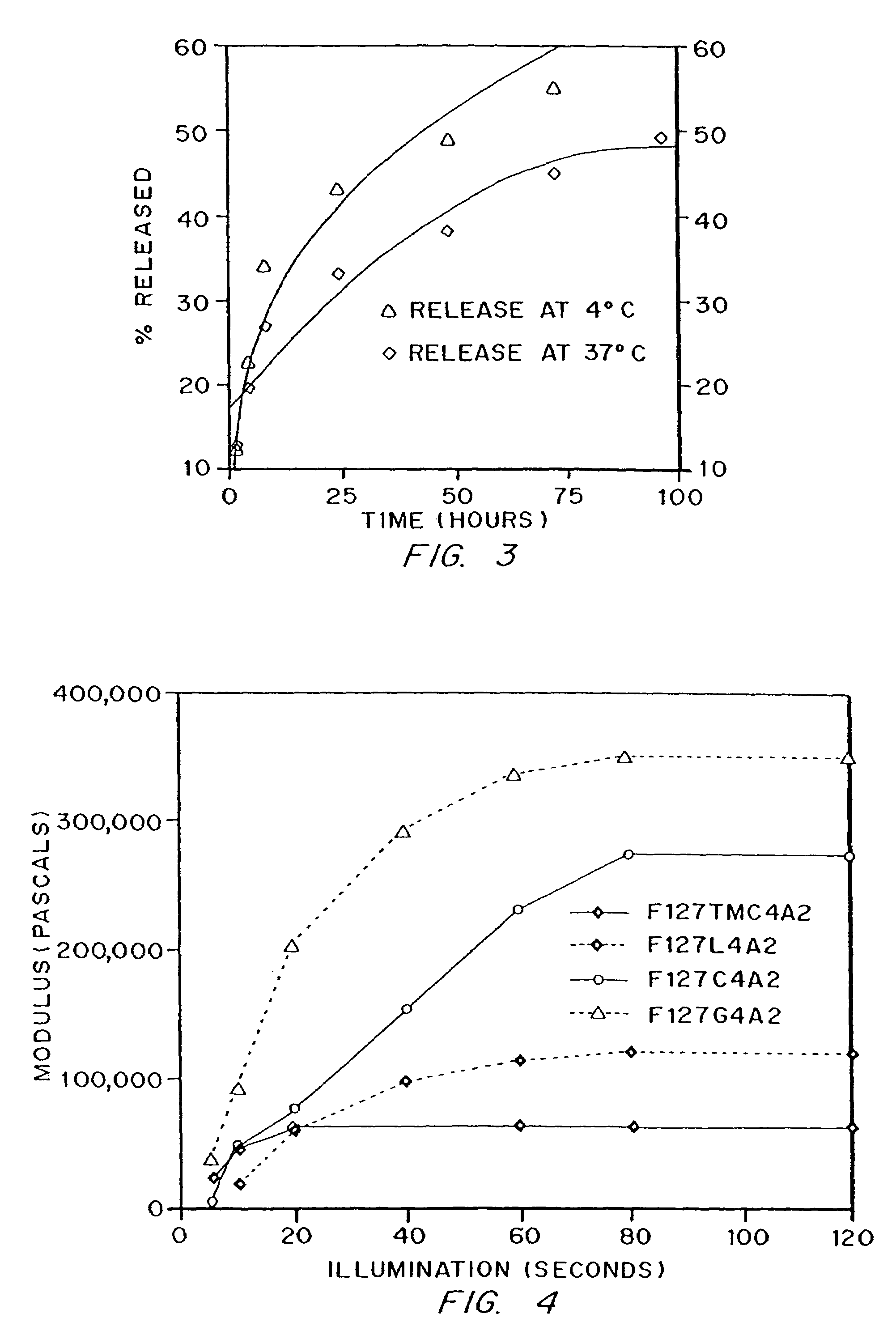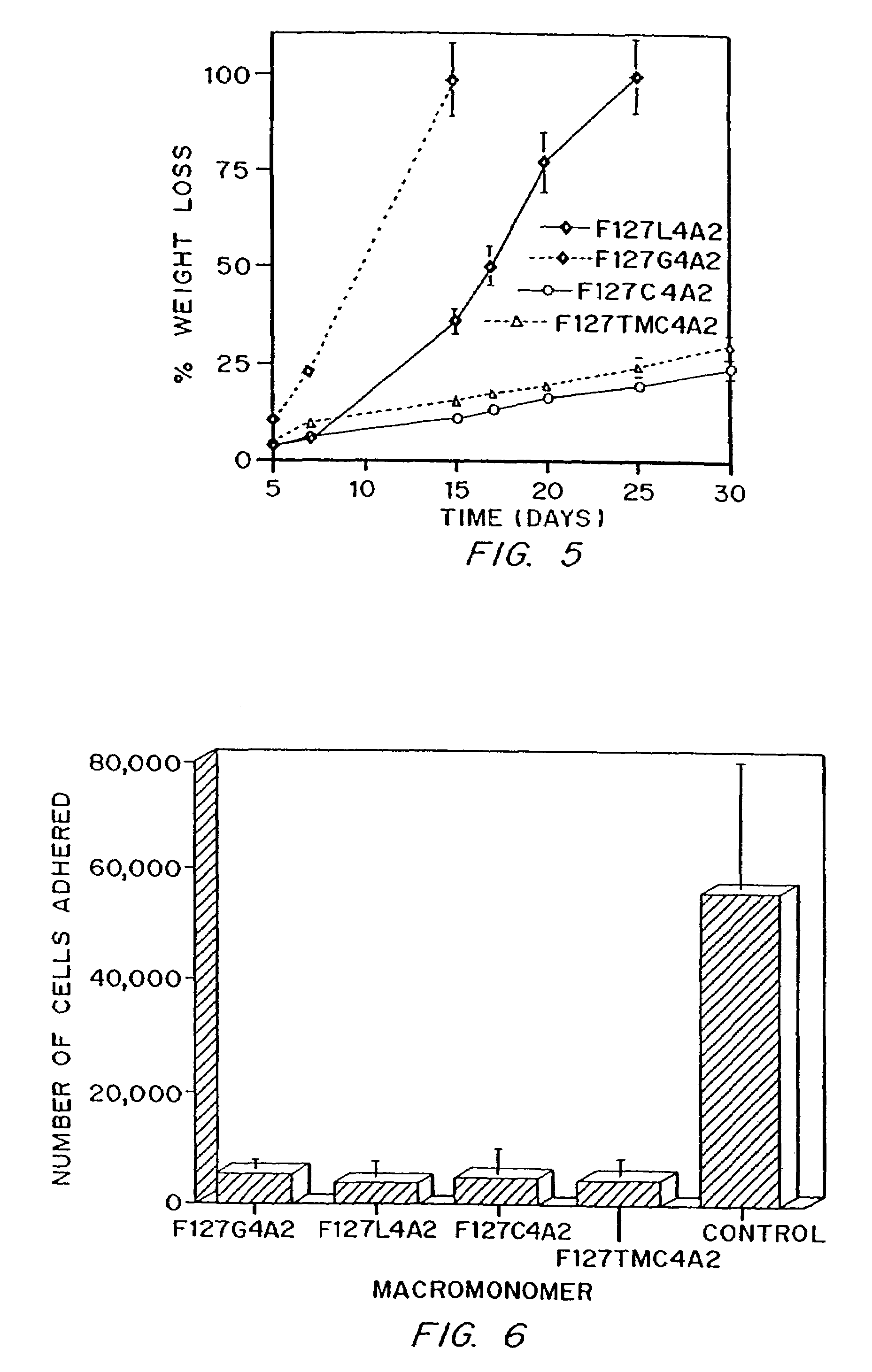Multiblock biodegradable hydrogels for drug delivery and tissue treatment
a biodegradable, multi-block technology, applied in the direction of depsipeptides, powder delivery, peptide/protein ingredients, etc., can solve the problems of non-biodegradable polymer systems for drug delivery, inconvenient application, non-degradable polymer systems, etc., to improve the absorption of poly(n-isopropyl acrylamide) and the effect of increasing the caproate content of the monomer, reducing the cmc value value, and reducing the acryl
- Summary
- Abstract
- Description
- Claims
- Application Information
AI Technical Summary
Benefits of technology
Problems solved by technology
Method used
Image
Examples
example 1
Synthesis and Thermal Responsiveness of F127-(Lactate)6-Acrylate
[0092]a) Synthesis.
[0093]F127-(lactate)0-acrylate (unlactated control) (=F127A2?) was synthesized by acrylating 100 g of Pluronic™ F127 (polypropylene oxide-polyethylene oxide block copolymer, BASF, mol. wt. 12000)(“F127”) in anhydrous toluene using triethylamine and acryloyl chloride, in an argon atmosphere at 60° C. for 10 minutes. The hot, turbid reaction mixture was filtered and the filtrate was added to a large excess of hexane. The monomer was collected by vacuum filtration and dried in vacuum to a constant weight.
[0094]F127-(lactate)6-acrylate was synthesized as follows. F127 was melt dried in vacuo at 100° C. for 4 hours. D,L-lactide (Boehringer Ingelheim) was added to the melt under a nitrogen flush, followed by stannous octoate as a ring opening catalyst. After a reaction time of 4 hours, the melt was dissolved in toluene and precipitated in a large excess of hexane. Acrylation of F127-(lactate)6 was carried o...
example 2
Dextran Release by F127A2
[0107]The non-degradable material, F127A2, was made as described above in Example 1, with no addition of hydroxy acid to the Pluronic™ polymer backbone. Dextran (labeled with fluorescein) of molecular weight 71,000 daltons was mixed at 1% final concentration with F127A2 macromer (final concentration 10% wt / vol, in water) and polymerized as described in Example 1. Release of dextran was determined by visible absorbance. Release kinetics were significantly altered by temperature, as shown in FIG. 3.
example 3
Synthesis of Macromers with Biodegradable Linking Groups
[0108]Four monomer types were made by the general procedures described in Example 1, each containing about 4 units of each of four different biodegradable linkers, designated by L (lactate), C (caprolactone), G (glycolide), and TMC (trimethylene carbonate). Parameters for the synthesis of the thermosensitive macromonomers are listed in Table 2. Properties of the monomers characterized are listed in Table 3, including biodegradable segment and end group incorporation by HPLC and NMR, and Mn determined by GPC and NMR.
[0109]
TABLE 2TempFeed Ratio° C. / M.W.PPOPEOMonomer / timeYieldCompound(g / mole)M.W.M.W.diol(h)(g)F127L4A212600378088204180–190 / 580.46F127C4A212600378088204180–190 / 581.38F127G4A212600378088204180–190 / 571.89F127TMC4A212600378088204180–190 / 579.29
[0110]
TABLE 3Biodeg.Biodeg.EndEndSeg.Seg.GroupGroupMnMnMnMacro-Incorp.Incorp.Incorp.Incorp.GPCNMRExpectedmonomer(HPLC)(MNR)(HPLC)(NMR)g / molg / molg / molF127L4A25.68 ± 0.015.582.09 ± 0....
PUM
 Login to View More
Login to View More Abstract
Description
Claims
Application Information
 Login to View More
Login to View More - R&D
- Intellectual Property
- Life Sciences
- Materials
- Tech Scout
- Unparalleled Data Quality
- Higher Quality Content
- 60% Fewer Hallucinations
Browse by: Latest US Patents, China's latest patents, Technical Efficacy Thesaurus, Application Domain, Technology Topic, Popular Technical Reports.
© 2025 PatSnap. All rights reserved.Legal|Privacy policy|Modern Slavery Act Transparency Statement|Sitemap|About US| Contact US: help@patsnap.com



